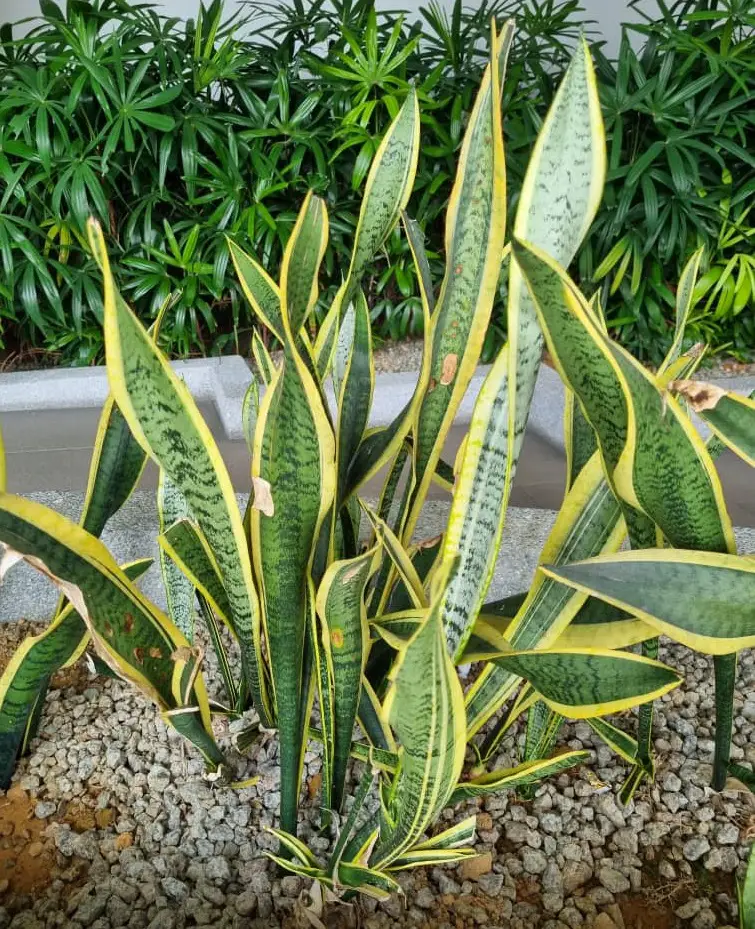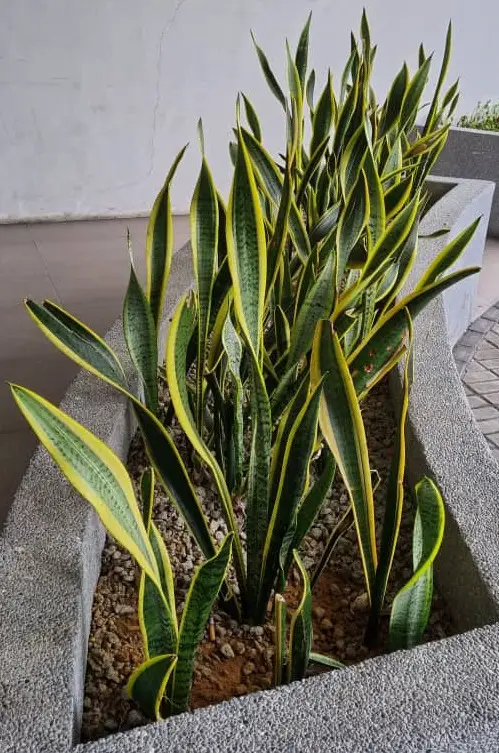Snake plants are a common and very attractive plant to keep around the house because they are beautiful, sturdy, and work well with most decor styles that your house might feature.
The snake plant is having many other names like Mother-in-Law’s tongue, mother’s plant, snake tongue, Sansevieria, and Viper’s Bowstring Hemp.
So, how do you grow and care for a snake plant? The answer is fairly simple. You must properly plant it, choose a location that will allow it to get what it needs in terms of temperature and sunlight, and then shower it with a little bit of water and lots of attention to make sure it keeps growing strong and healthy.
While the care and growing of a snake plant aren’t too terribly different than the care and growing of many other succulent house plants in general style, owners of snake plants would be advised to still go through an overview of all the specific worries and conundrums typically known to affect snake plants and their owners so as to best ensure the proper care and nutrition of this beautiful and hearty specimen of house plant.
Reading over this article will guarantee you the best chance you have of keeping your snake plant alive and flourishing for as long as it can.
Planting Your Snake Plant and Finding a Place For It
Snake plants are incredibly sturdy, and one of the things that can do harm to them is an excess of water. If your snake plant gets too much water, this may lead to what is called “root rot”, where the root actually starts rotting away in the soil.
Because of this, it is generally recommended to use a special soil mix that drains very easily and doesn’t retain a great deal of water, negating the chance that excess water will swell up around the roots and cause them to start rotting away.
These special soil mixes can be found at any garden supply store, and will typically advertise themselves as being fit for low-water or desert plants, such as cactuses, and all other varieties of succulents.
Be sure not to ignore this suggestion, as you would hate to grow fond of your beautiful snake plant only to wake up one morning and see it’s starting to rot away from having too much water in its soil. Do right by your snake plant in these early steps and it will do right by you later on by growing healthy and strong.
Snake plants are not only hardy, but hearty, and they can overtake the pot you put them in faster than you might be first imagining.
For this reason, it is recommended to find either a large pot to place them in that the snake plant might then grow into, or to place your snake plant in a plastic container as it grows so that it doesn’t shatter the ceramics or glass of a more sturdy container, which it can be moved into later on.
When placing your snake plant into its new home, be sure it stays fairly close to the surface, as this is where the snake plant likes to be rooted. Generally, only cover up the roots with about an inch or so of soil.
When choosing the location to place your snake plant in your home, the most important thing to consider is that snake plants generally favor warmer climates, so you will want to avoid placing your snake plant anywhere that is drafty or cold.
As with most plants, it is best to place your snake plant somewhere where it can get a little bit of sunlight, although the hardiness of your snake plant makes it so that it can be in a less sun-traveled area and still thrive to a more than the reasonable degree. If it does get sunlight, know that snake plants don’t like their sunlight head-on, though, so be sure to keep it out of the direct sunlight and just try to find a comfortable place where it can get the little bit of light it most prefers.
Read also: How To Grow Croton Plants Indoors Or Outdoors
Caring For Your Snake Plant
Now it is time for you to sit back and watch your snake plant grow, while steadily keeping privy to its needs and making sure it has everything necessary for it to survive and thrive. As has been mentioned, the most important thing is realizing that your snake plant doesn’t need a terribly large amount of water, and prefers drier soil most of the time to moist soil.
How often to water snake plants?
Generally, you are only going to water your snake plants about twice a month in the summer and once a month in the winter, and even that might be considered excessive by some. The most important thing is that you make sure the soil is dry before you water it again as if the soil is moist, the snake plant doesn’t need any more water.
Also, keep in mind that the climate and atmosphere of your location can affect how much water your snake plant needs. In very humid climates, the snake plant is going to need to be watered much less often than in a dry climate, while exposure to direct sunlight and higher temperatures can sometimes cause snake plants to need to be watered slightly more often.
As well, it is important that, when watered, the water is allowed to thoroughly drain. Consider this when picking the proper vessel for your snake plant and that will take care and maintenance of your snake plant that much easier as time goes on. Another thing to keep in mind is that some people water their snake plants from the bottom so as to encourage the roots to grow downwards, thus increasing the stability of the snake plants’ voluminous body. This isn’t necessary, but it has been known to have some positive effects.
You can refer to this video on watering the snake plant.
Read also: How To Grow and Care for a Spider Plant
When it outgrows its current vessel, your snake plant can either be dug up and put into a new and larger vessel or divided up and placed into multiple vessels of the same or smaller size. Don’t be afraid to rip your snake plant apart, as sometimes this is the only way to ensure that it continues to flourish, and, in time, each little piece that you replant will grow to be just as large as the one it came from, and then even larger!
For this reason, snake plants really can be considered a gift that never stops giving, and, pretty soon, you may find yourself with a surplus of tiny little snake plants that you are giving out to all your friends and family, or even just random acquaintances!
Assuredly, the snake plant loves to grow, and it flourishes without too much effort from the owner, sometimes even beyond the owner’s needs or desires.
One last thing to consider when taking care of your snake plant is that some people may choose to supplement their plant’s traditional diet of water and light with what is called plant food, or fertilizer.
Snake plants are considered succulent plants, meaning that they are thicker and hardier than other plants and retain a great deal of water, surviving and flourishing more in arid conditions that can be very dry and hot. For this reason, when picking out food or fertilizer, you will want to pick one favored towards succulents.
Many snake plant owners choose not to add any additional nutrients to the diet of their snake plant and don’t seem to notice their snake plant being any worse off for it.
However, it definitely doesn’t hurt, and if you’d like to do the most you can to make sure you have all bases covered when taking care of your snake plant, you may want to put that extra foot forward and procure some plant food tailored for succulents that can be used to supplement your snake plants nutrition.
If you go this route, you are generally only going to want to feed your plant with every other watering, which equals out to about once every month or two.
As with all other aspects of growing and maintaining your snake plant, the most important thing you can remember is not to overdo it, as your snake plant was designed to grow in some of the worst conditions possible. It may actually turn out to be harder to stop it from growing than to keep it growing.
So, if you, like so many others, have decided you’d like a snake plant in your house to keep you company, be sure to keep all this in mind. Snake plants are miraculous creatures in that they grow and grow without too much effort put into them, but their uniqueness also gives them unique problems when compared to other plants.
These problems are generally being easily overwatered, having too much exposure to the elements, and pushing the boundaries of their given containers to an extreme degree.
If you keep careful track of how much you water your snake plant, keep it, for the most part, warm but out of direct sunlight, and make sure that it never gets too big for the container you have it in, your snake plant should prove a very strong and willing companion for you in your home long into the future.
Read also: Why Grow the Borage Plant in Your Herb Garden?



